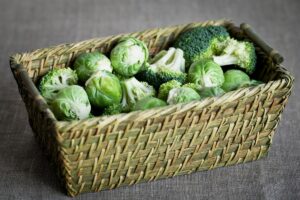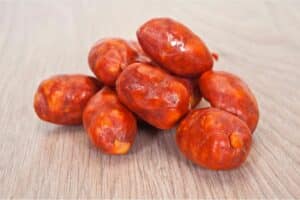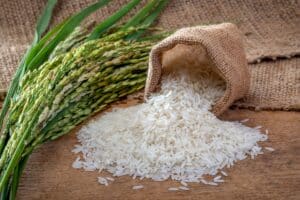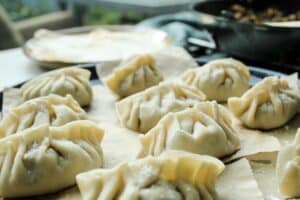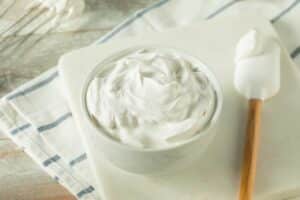When life gives you batter, do you make English muffins or crumpets? Both kinds of round, soft, and fluffy pastries make a delicious breakfast with melted butter, jam, honey, and many other sides and toppings. They are also known as griddle cakes since they can be cooked on the stove without ever using your oven.
But don’t let their similarities fool you because their differences are far greater. There is so much to share and compare, from batter and texture to the cooking method, so let’s get started.
Crumpet: The “Spongy” One
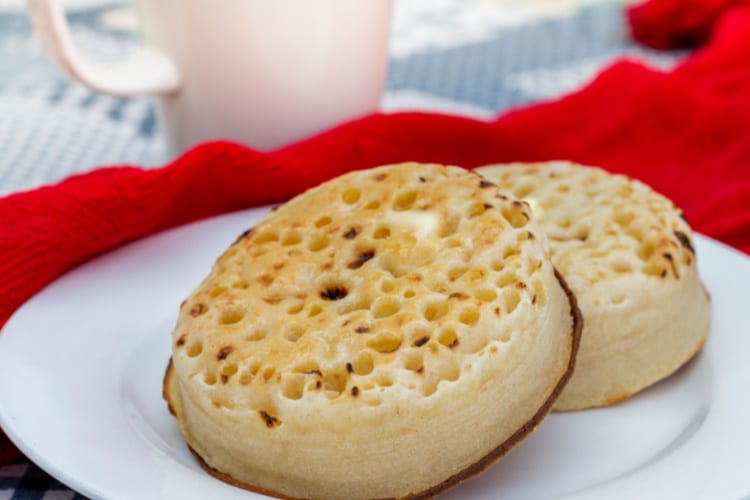
The best way to describe a crumpet is as a circular, chewy cake with holes on top. Its spongy, signature surface texture is achieved by using baking soda in the recipe.
Crumpets are only baked on one side so that the other side can soak up the delectable jams, sweet cocoa butter, and honey you can add. People frequently eat them for breakfast or in the afternoon with a cup of tea.
English Muffin: The “Bread-Like” One
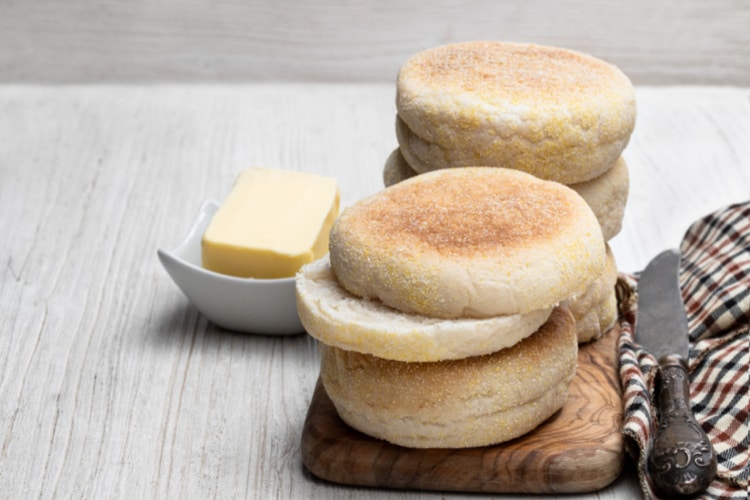
English muffins are flatter and drier than crumpets, and since the recipe doesn’t include baking soda, their holes are located on the inside rather than on top. English muffins are cooked on both sides, so they get super crispy.
Their smooth surface is perfect for layering jams, honey, and creams on top. English muffins are also very easy to store via freezing.
Crumpet vs English Muffin: What’s The Difference?
You may have recognized the key similarities between crumpets and English muffins after reading the two descriptions above: both are griddle cakes, round, with a spongy or fluffy texture, and are often eaten for breakfast or with afternoon tea.
What makes each of them unique, then? Let’s investigate.
They Have Different Origins
Allegedly, crumpets originated in late 17th century England and were originally known as “crompit cakes” — small, hard, oval-shaped biscuits cooked on a griddle that had a pancake-like appearance. During the Victorian Era, the recipe was altered to include yeast and baking soda to give them a soft spongy look.
Ironically enough, English muffins aren’t from England — they were made as an alternative to crumpets by a British immigrant in the US named Samuel Bath Thomas. Thomas, who owned a bakery in New York City’s Chelsea area, came up with the idea for a “toaster crumpet” in 1880.
They became a chic alternative to toasts served in hotels and restaurants. In 1894, they were renamed “English muffins,” and the rest is history.
They Are Made With Different Ingredients
Crumpets are made using milk, yeast, baking soda, and baking powder. The ingredients make the batter very moist, with a hydration of 90% or more, resulting in a loose and spongy texture.
English muffins are made from solid dough rather than liquid batter. Milk is sometimes included; however, the traditional recipe doesn’t require milk. They have a greater rise than crumpets since they include higher amounts of yeast or sourdough. Baking soda is occasionally used to help the dough rise even more.
They Are Cooked Differently
Since crumpet batter is very liquid, you pour it into ring molds and cook it only on one side. This cooking technique, together with the loose batter, gives the finished pastry its distinctive spongy appearance with holes on top. Crumpets are cooked for 20 — 25 minutes.
Meanwhile, English muffins are cooked evenly on both sides. As a result, you get an evenly toasted pastry that’s fluffy inside. English Muffins also take longer to cook, around 2 hours.
They Have Different Textures
Crumpets are made with a high-hydration batter and baked on one side, which gives them a foamy appearance and a moist and soft texture. They rise less than their doughy cousins.
English muffins are made with solid dough that rises more due to the higher amounts of yeast. They have a bread-like consistency thanks to sourdough fermentation.
They Are Usually Paired With Different Dishes
Crumpets absorb toppings like melted butter, marmalade, or honey beautifully. They pair nicely with sweet spreads, though some people like them with savory sides like eggs or sausages. They are normally eaten in the morning or with afternoon tea.
English muffins, on the other hand, are cut in half and filled with sweet or savory ingredients such as sausage, eggs, bacon, cheese, and chips. Since they resemble bread, they are a great alternative to toast and make a filling lunch or breakfast.
Crumpet vs. English Muffin: Which One’s Healthier?
Crumpets have fewer calories than muffins, but the latter are healthier since they have less fat and no cholesterol. Let’s look at the list of their nutritional values.
| Crumpet | English Muffin |
|---|---|
| 102 calories 19.6 g water 3.99 g protein 0.76 g fat 19.9 g carbohydrate 1.58 g fiber 1.59 g sugar 73.4 mg calcium 1.8 mg iron 10.8 mg magnesium 41.4 mg phosphorus 49 mg potassium 191 mg sodium 42.3 µg folate | 132 calories 25.3 g water 5.14 g protein 0.98 g fat 25.6 g carbohydrate 2.03 g fiber 2.05 g sugar 94.5 mg calcium 2.32 mg iron 13.9 mg magnesium 53.4 mg phosphorus 63.2 mg potassium 246 mg sodium 1.04 mg vitamin C |
The Breakdown: Key Differences
Now that we’ve discussed them in depth, let’s summarize their main distinctions.
| Key Differences | Crumpet | English Muffin |
|---|---|---|
| Origin | Anglo-Saxon alternative to “pikelets” | Originally made by an English immigrant in New York as an alternative to crumpets. |
| Texture | Liquid batter | Solid dough |
| Preparation | Baked on one side | Baked evenly |
| Cooking time | 20 — 25 minutes | 2 hours |
| Appearance | Spongy | Bread-like |
| Serving | Served whole with toppings | Cut in half and paired with sweet and savory ingredients |
| Nutritional value | Fewer calories | Less fat and no cholesterol |
Conclusion
English muffins and crumpets have one main thing in common — they both make delicious British breakfasts.
Their main difference is that English muffins resemble a little, round loaf, whereas crumpets resemble a circular, fluffy sponge. Crumpets are lower in calories, but English muffins are lower in fat and contain no cholesterol, so they are the healthier option.

